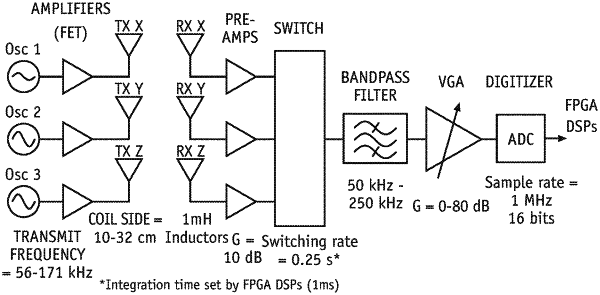| CPC G01C 21/206 (2013.01) [G01C 21/3635 (2013.01); G05D 1/0274 (2013.01)] | 26 Claims |

|
1. A long-range, through-the-wall position sensing method comprising:
providing one or more transmitting devices, each configured to transmit quasistatic magnetic fields along one or more transmitting axes;
providing at least one receiving device configured to receive quasistatic magnetic fields along one or more receiving axes;
placing the one or more transmitting devices outside an enclosed space having an outer wall;
placing the at least one receiving device inside the enclosed space;
transmitting through the outer wall, by the one or more transmitting devices, the quasistatic magnetic fields in one or more frequency bands;
detecting, by the at least one receiving device, one or more quasistatic magnetic field couplings between each axis of each of the one or more transmitting axes and each axis of the one or more receiving axes;
based on the detected quasistatic magnetic fields, calculating orientation-invariant ranges between the at least one receiving device and each of the one or more transmitting devices, the calculating comprising contributions from complex images of the one or more transmitting devices, thereby accounting for induced eddy-currents in ground due to transmitted quasistatic magnetic fields, and wherein the contributions from complex images are based on a dependency of the detected quasistatic magnetic fields on an inverse of distances of the complex images from the at least one receiving device to a third power.
|